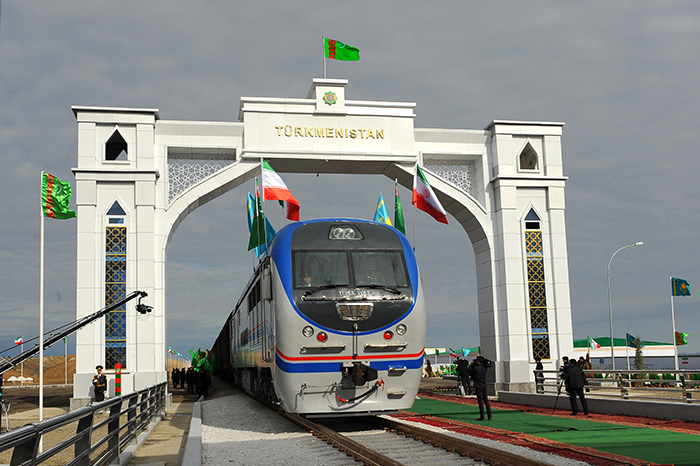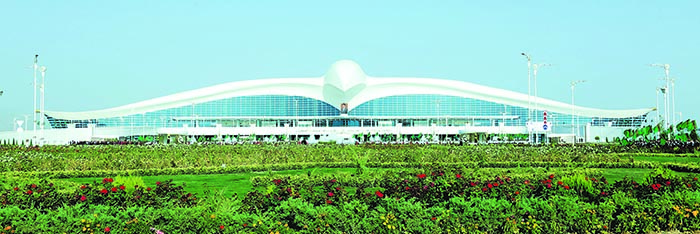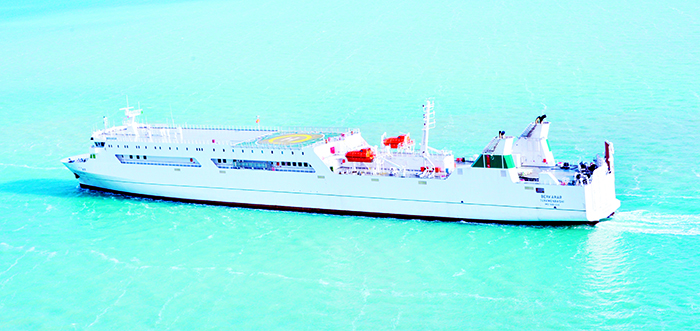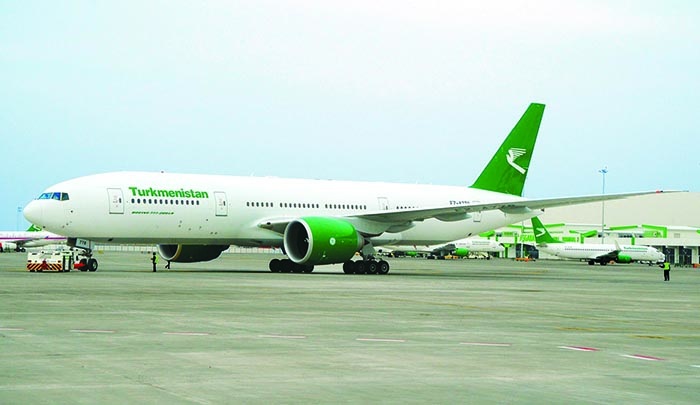Turkmenistan is located in a favorable geographical situation at the crossroads of the main routes of the continent providing the countries of the Region the rapidly forming in our state the multimodal transport infrastructure to ensure strategic transit corridors of Euroasia. This fact and the constructive initiative of the leader of the nation became the basis for the decision of the United Nations to hold the first in the history of the Global Conference on Sustainable Transport System in Ashgabat in November 26-27 of this year.

This forum is designed to be an effective step in the further development of mutually beneficial international partnerships in this critical area. It will be held in the Turkmen capital in accordance with the Resolution of the United Nations to assist the creation of sustainable multilateral transport and transit corridors, to ensure full cooperation among all modes of transport, adopted in December 2015, at the 70th session of the United Nations General Assembly.
This is the second document on international transport issues, initiated by the President of Turkmenistan and is unanimously approved by the United Nations. A powerful impetus of cooperation in this field, of course, has become a high-level conference on the role of transit and transport corridors to ensure international cooperation, stability and sustainable development held in Ashgabat in OCTOBER 2014.
An important component of our country's transportation system is the civil aviation, which is also successfully expanding world economy links in the international airspace. In this context, the leader of the nation initiated and systematically put into practice large-scale projects for the construction of new airports, terminals, facilities engineering and technical purposes, reconstruction of existing ones, improving the work of the country's air fleet.
At present time, the aircrafts of “Turkmenhowayollary”, in addition to domestic airlines, it is undergoing the operation of regular flights to dozens of countries and geography of flights is constantly expanding.
A new ultra-modern international airport of Ashgabat, designed to become the main “air gates” of Turkmenistan, a major transit hub in continental and intercontinental air routes was completed in OCTOBER, 2016. The International Airport occupies almost 1200 hectares and includes more than 100 facilities with capacity of 17 million passengers and more than 200 thousand tons of cargo per year.
Air transport is extremely important for tourism. Most of the passengers of international airlines are traveling for tourism, business or cultural purposes, so here the national aviation plays a key role, providing a significant multiplier effect on the Turkmen economy.

Stressing the importance of intensifying constructive dialogue on development of the world transport system with specialized UN agencies, President Gurbanguly Berdimuhamedov proposed on the based on the experience of the International Road Transport Union (IRU), the UNECE and ESCAP to discuss the possibility of creating Modal Highway in Central Asia with access to Turkey.
Turkmenistan is also ready to act as a partner and member of the program “Europe-Caucasus-Asia” (TRACECA), because the formation of the western transport corridor from Central Asia is of great importance in the context of goals implementation of the revival of Great Silk Road and union of two world economic poles of Eurasia at qualitatively new criteria.
Another illustrative example is initiated by the President of Turkmenistan a draft of a new transport corridor “Central Asia - Middle East” (Uzbekistan-Turkmenistan-Iran-Oman) developed with a view to possible participation in it of neighboring countries.
An important link in the international transport traffic between the states of the Asian region aims to become the railway Turkmenistan-Afghanistan-Tajikistan. The first phase of the project envisages the construction of two sections of its 85-kilometer line Atamyrat-Imamnazar within Turkmenistan and 38 km - from the village to Imamnazar Andkhoy in Afghanistan.
The railroad Turkmenistan-Afghanistan-Tajikistan intended to stimulate trade between countries of the region. Implementation of a number of joint infrastructure projects in Afghanistan will give a powerful impetus to further development of the Afghan economy, which will contribute to the solution of important social issues, ensuring employment of the population.

The railway route Kazakhstan-Turkmenistan-Iran, as the “golden link” of the international transport corridor “North-South”, will provide a convenient and cost-effective delivery of goods from Europe to Central and South Asia, Middle East. Putting it into operation in December 2014 is also relevant in view of a possible link up with the “East-West” transport network, the transcontinental route across the Caspian, China-Central Asia-Caucasus-Europe.
From an economic point of view, all railway routes represents the shortest way for the delivery of goods, including transit, and in the future - and for passenger transport. And in today's conditions, the time is a critical factor. In this context, reducing turnover terms provides a significant competitive advantage. It, in turn, is reflected in the business and, ultimately - in the growth of welfare of the peoples of the partner countries.
With completion of railway route construction in the territory of Iran it will be convenient and cost-effective route for dozens of other countries in both northern and southern vectors. The new highway will give a powerful impetus to the development of the Caspian Sea region, including the expansion of its transport, industrial and social infrastructure.
In recent years, the rolling stock of railway transport of the country completely renewed, purchased more than a thousand freight wagons, including self lifting -wagons, hopper-for transportation of bitumen, tankers for oil transportation, cement carrier, etc. It was purchased a large number of wagons for passenger trains and locomotives.
The establishment of international transit transport infrastructure is actively undergone the construction of a new international sea port of Turkmenbashi. In the near future, the “sea gate” will be the largest logistics center in the region.

This large-scale investment project involves the construction of car-passenger ferry terminal with a total area of 230 thousand square meters and a container terminal with a total area 249 thousand square meters. The complex will include a general loading terminal, bulk cargo terminal, the terminal polypropylene, as well as shipbuilding and ship-repair factory, which will occupy an area of 166 thousand square meters.
Commissioning of the last objects will, in fact, mean the emergence of a domestic shipbuilding industry. The capacity of auto-passenger and container terminals and ferries meet the high demand in services for the carriage of goods and passengers in the Caspian Sea, including transit. The annual capacity of multi-functional port will be 15 million tons of cargo of different purposes.
Given the prospects of development of the economies of Central Asian countries, it is projected to increase mutual turnover volumes and increase the flow of goods in transit to these countries through the port of Turkmenbashi. Car passengers will also serve as an incentive to expand transport links.
Thus, Turkmenistan, forming its own approaches to these aspects, comes from transforming the rapidly growing potential of transit transport conveyance in the economic interest of not only the region, but also of the wider - intercontinental scales.

